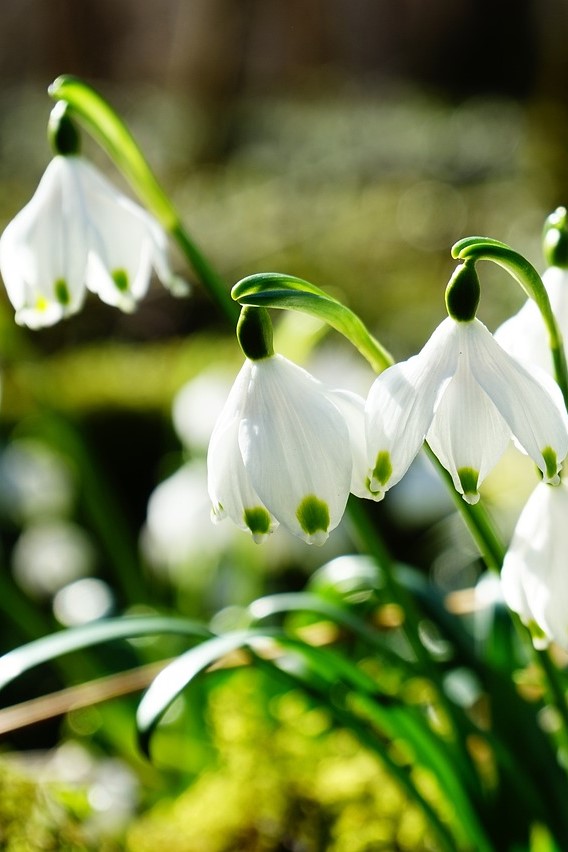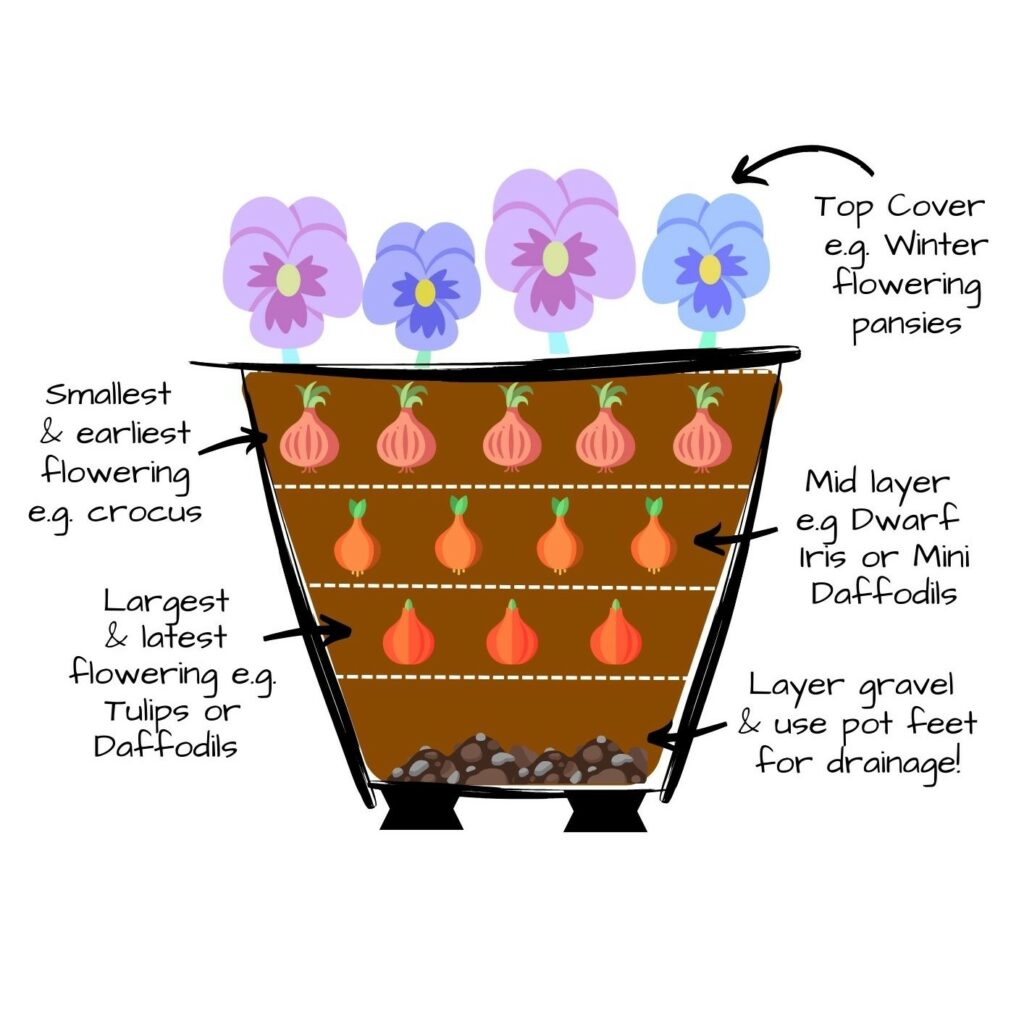A spring display that will last for months!
Bulb lasagne is a planting technique that involves layering different types of bulbs in a pot to create a beautiful display of flowers growing in succession throughout the season. It is a fun and easy way to add a pop of color to your garden, patio, or balcony.
When should I plant my bulbs?
Generally, it is recommended to plant spring-flowering bulbs in autumn and summer-flowering bulbs in early spring- check the packaging if you’re uncertain.
To keep colour throughout, you can plant seasonal bedding flowers on top of your bulb lasagne.
Items Required:
- Large pot with drainage holes
- Gravel
- Multi-purpose compost or potting soil
- A variety of bulbs with different flowering times
- A trowel or small shovel
- A selection of seasonal bedding plants e.g. Pansies, Violas, Cyclamen
The important thing to get right is the order in which you plant them- the bulbs that flower first should be your top layer, with the ones flowering next on the second layer and so on. The emerging shoots of the bulbs laid in lower layers will bend around anything located above them.

Creating your bulb lasagne:
- Choose a large pot with drainage holes so that excess water can drain away easily (pot feet are an optional extra to help with drainage)
- Fill the bottom of the pot with gravel- this will also help provide good drainage
- Add your first layer of compost, until it’s about one-third full
- Now you can add your largest and latest-flowering bulbs (e.g. Tulips or Hyacinths) You can plant them in a random or central pattern, but make sure they’re one bulb width apart
- Cover the first layer of bulbs with a couple of inches of compost
- Add your second layer of bulbs- these should be slightly smaller and flower slightly earlier (e.g. Iris or Daffodils) still keeping a bulb width apart
- Cover the second layer of bulbs with another layer of compost
- The third layer of bulbs will be your earliest flowering and smallest in size (e.g. Crocus or Snowdrops)
- Cover with another layer of compost
- Add your seasonal plants on top and fill in any gaps with more compost- your bulbs wont flower until late winter, so you can add bedding plants to the top of your container to create a beautiful display in the meantime
- Water the pot thoroughly
- Place the pot in a sunny location, and the bulbs will start to grow in succession
Top Tip:
After your bulbs stop flowering, leave the leaves to die back naturally before removing them. You can then replant the bulbs in the ground, or leave them in the pot to bloom again the following year.
